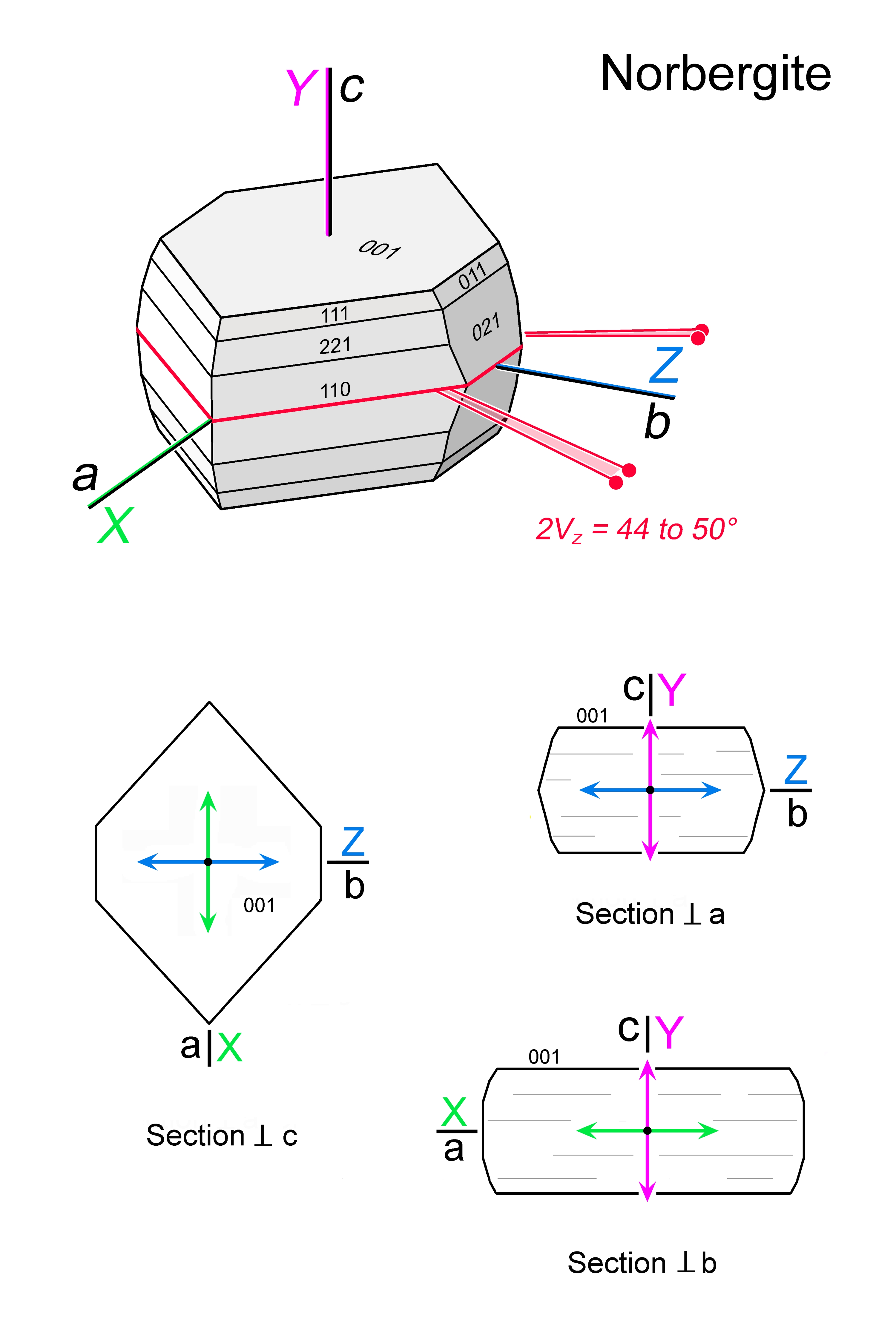|
| Formula | Mg2SiO4 • Mg(F,OH)2 |
| | Optic class & sign | Biaxial positive |
| | Optical orientation | X = a, Y = c, Z = b |
| | Optical plane | (001) |
| | Relief | Low-positive |
| | Refractive indices | nx = 1.561 -1.567
|
|
ny = 1.566 -1.579
|
|
nz = 1.587 -1.593
|
|
| n increases with increasing Fe and Ti, decreases with increasing F |
| | Birefringence (max.) | 0.026 - 0.027 |
| | | Δn increases with increasing Fe and Ti |
| | Optic Angle
| 2Vx
|
| | 2Vz
= 44 - 50° |
| | Sign of elongation | Length-slow, l(+) or length-fast I(-) |
| | Interference figure | |
| | Colour / pleochroism | Colourless to pale yellow; pleochroism X>Y>Z
|
| | Zoning | |
|
|
| Form | Habit | Granular, thick tabular |
| | | Surface | Commonly anhedral |
| | Cleavage | Poor |
| | Twinning | None |
| | Extinction | Straight or symmetrical to traces of crystal faces, if these are developed |
|
|
| Reaction textures | |
| | Alteration / decomposition | Serpentine, chlorite, brucite |
|
|
| Occurence | Ign | |
| | | Met | Impure dolomitic marble |
| | | Sed | |
| | | Hyd | |
| | | Other | |
|
|
| Distinctive properties | Colour and pleochroism, lack of cleavage, restricted occurrence. Optical distinction between the different members of the humite group is difficult. Microprobe or XRD analyses may be necessary. Norbergite has the lowest n and lowest 2V within the humite group. Norbergite, chondrodite, humite: lower n and Δn compared to magnesian olivine. |
| | Additional comments | Least common member of the humite group. Humite group minerals tend to form where plutonic rocks have introduced F into carbonate wall rocks. Norbergite, chondrodite and humite in particular contain substantial amounts of F, with contents increasing from clinohumite to norbergite.
Different members of the humite group may occur as intergrowths, also with olivine or monticellite.
|
|
|

 Images
Images 


 Images
Images 
